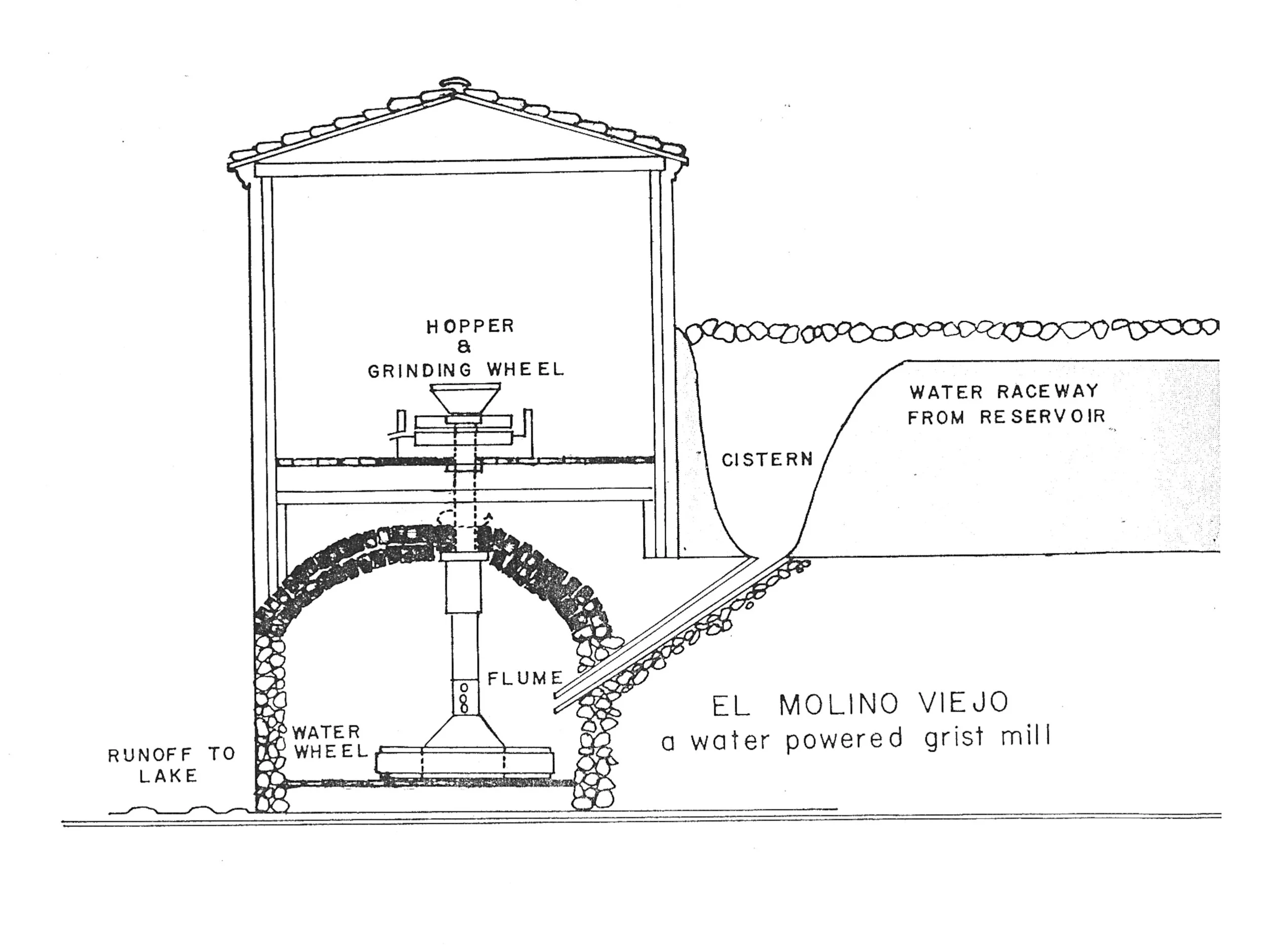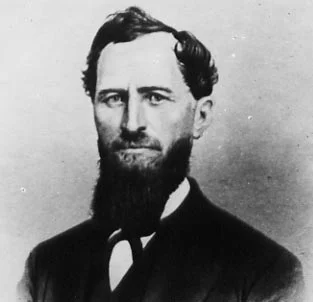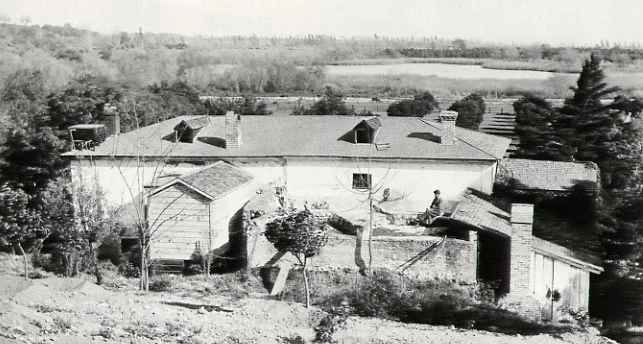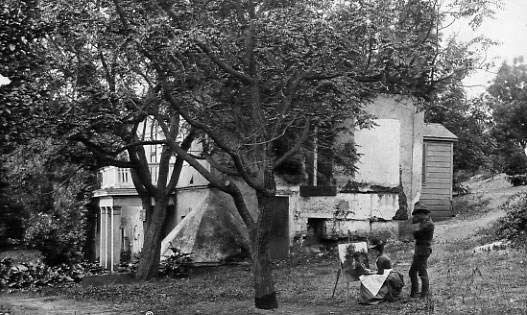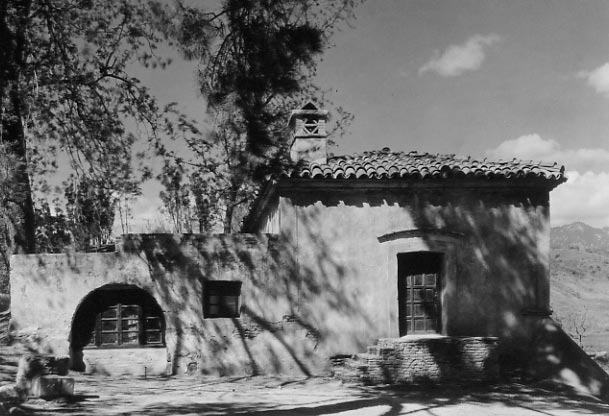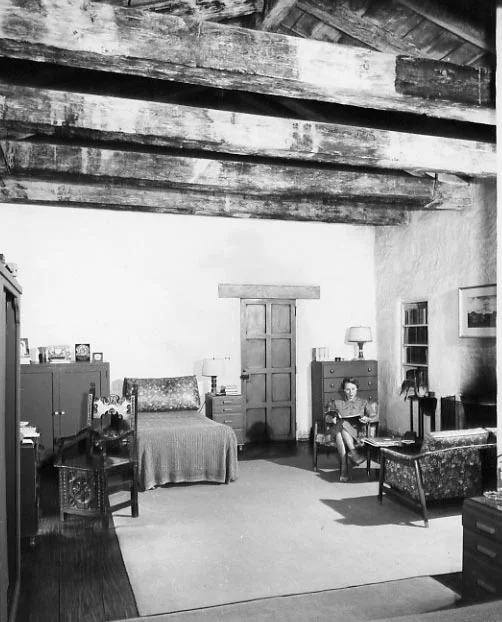Completed in 1816 as a grist mill for Mission San Gabriel, the original two-story structure measured 53 by 26 feet. El Molino Viejo is the oldest commercial building in Southern California. It's a prime example of western adobe style architecture. Today, the original structure functions as a museum as well as office space for Old Mill staff.
A Brief History:
Father Jose Maria de Zalvidea designed the Old Mill in 1816 as a supplement to the San Gabriel Mission. It was fully functional for seven years, and provided resources for the mission and surrounding area. In 1823, a newer, more efficient mill was built adjacent to El Molino Viejo. Thus, the original became dormant.
The Kewen family (after whom the street in San Marino is named), inherited the property in 1858. They refurbished the original, adding a patio and large windows while still maintaining the original style. They lived there for 20 years before defaulting on a mortgage in 1879.
The building was once again forgotten for another 17 years. In 1896, a quite remarkable piece of journalism "El Molino Viejo (The Old Mill)" was penned by Topsy Tinkle (yes, you read that name right) for the Los Angeles Times. The article describes the mill with “no sign of decay.” It is no surprise, then, that the Huntington family became very interested in the property, and purchased it in 1903. By 1914, it was the golf course and club house for the Huntington Hotel (today the Langham.)
It fell into disrepair for a third time in the 1920s, but was restored and rented out from 1927-1962, at which point it was gifted to the city of San Marino.
The city elected to use the space as the headquarters for the California Historical Society in 1965. For 30 years, CHS ran community historical programs from the site. The Old Mill Foundation was created in 1995 to oversee and run the Mill.
In 2016, El Molino Viejo celebrated its 200 year anniversary.
The components:
- The materials used to construct the mill were meticulously thought out. The lower walls are five feet thick and composed of oven-baked brick and volcanic tuff, while the walls of the upper level are built from layers of sun-dried adobe slabs. Rafters, ceiling, and beams are made of local pine and sycamore; the roof is tiled. The whole surface of the building is covered with mortar made from lime derived from burnt sea-shells, and buttresses supporting three corners supply additional strength. These were needed not only as reinforcement against earthquakes, but also to counteract the vibration of the machinery.
- The entrance room (with its collection of antique paintings and furnishings) served as the Grinding Room of the mill. Here, the heavy millstones ground the grain harvested on the mission lands. A set of millstones, discovered by General George Patton during his childhood in this area, has been preserved on the patio.
- The upper room, on the top level, was originally used as the Granary, where the milled grain was stored. Today, the California Art Club maintains a gallery where outstanding paintings are displayed for sale. The exhibitions change every three months and are on public view.
- The structural outlines of a water tank can still be seen on the western side of the building. This provided the energy to operate the machinery. The water flowed through the mill eastward through a ditch to Mission Lake. The lake is now San Marino’s Lacy Park.
- Downstairs, there is a small display featuring an operating model of the original mill. This photographic display chronicles the life of the Mill since 1816, and the families who have called it home.
- Outside of The Mill is an attractive, well-maintained garden highlighting native California trees and plants. The centerpiece of the garden is the Pomegranate Patio where many civic, educational, and organizational events are held during the spring and summer months. This patio is the home of the Magical Music At The Mill chamber music concerts every summer.

